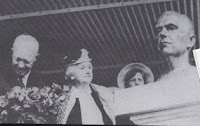Flight Worthiness
By 1964, NASA was well under way with the Saturn/Apollo program and different elements were being developed and manufactured all across the USA; the first stage in New Orleans, the second and third stages in Los Angeles, and the Instrument Unit in Huntsville, AL; each by a different contractor. In addition to those major elements all sorts of mechanical and electronic items were being supplied from every part of the country. All these elements would eventually come together at the launch site as Saturn I , Saturn I-B, and Saturn V launch vehicles capped with manned Apollo capsules. In the mean time each component and each major element would go through numerous handovers as it was assembled, tested, and mated with other elements.
NASA Associate Administrator for Manned Space Flight, Dr. George E. Mueller, asked each of the NASA centers involved in the Apollo program to propose a protocol that would both track these handovers and provide confidence and assurance that each element had been correctly produced, had passed all tests and inspections and was ready for launch and space flight. At the time I was a part of the Marshall Space Flight Center (MSFC) team that was testing the early versions of the Saturn I and Saturn I-B. It was planned for that team to eventually transition into the group that would oversee the testing of the Saturn propulsive stages and instrument units at the contractor facilities. Along with several other test and quality assurance types, I was assigned to the team that was tasked with the preparation of the MSFC’s protocol proposal.
At this point, I can not remember how long it took us to finish the proposal, but I do remember some long meetings, animated discussions, and working through several weekends. After a through review by MSFC management, I was asked to make a Flip Chart presentation of the proposal to Dr. Mueller.
Yes, Techies, this was back before we had view foil projections and certainly before computer aided graphics and Power Point. If the term “Flip Chart” leaves you wondering, google it, or better still, ask a gray-headed engineer to explain it to you. Luckily, I had the aid of a good illustrator to prepare the charts.
Dr. Mueller came to MSFC for the presentation and I flipped my charts and explained our proposal to him. He had a few comments and fewer questions. He thanked us, took the printed copy of the proposal and went on his way without giving us any hint of what he thought about it. Several weeks later, NASA published the official CERTIFICATE OF FLIGHT WORTHINESS PROTOCOL (COFW). That was not the title that we had for it and much of the nomenclature in it differed from our proposal but in essence it was the same thing that MSFC had proposed.







